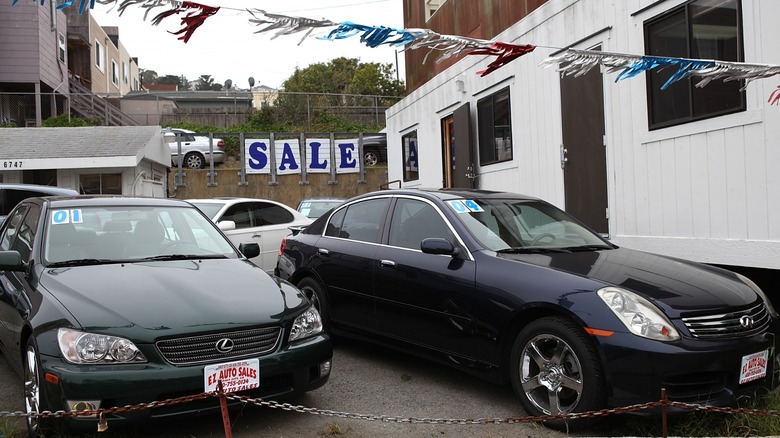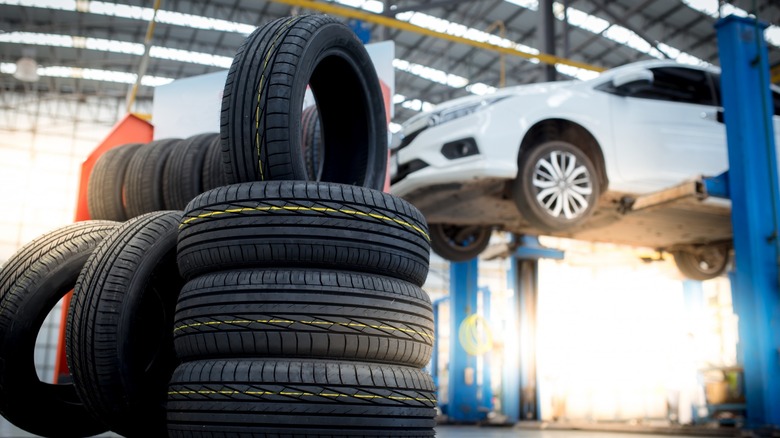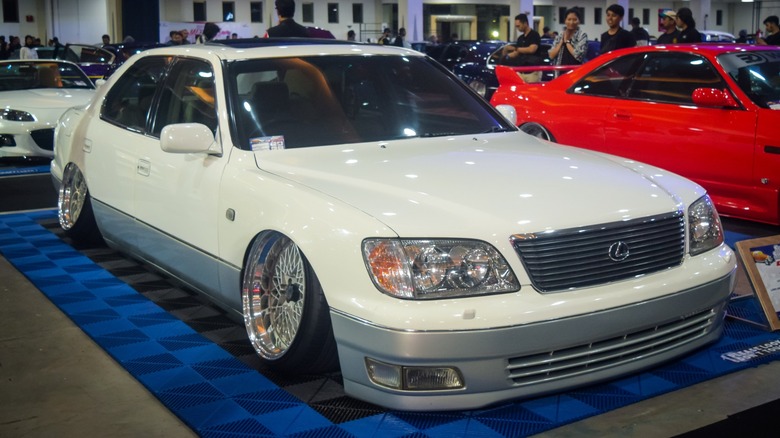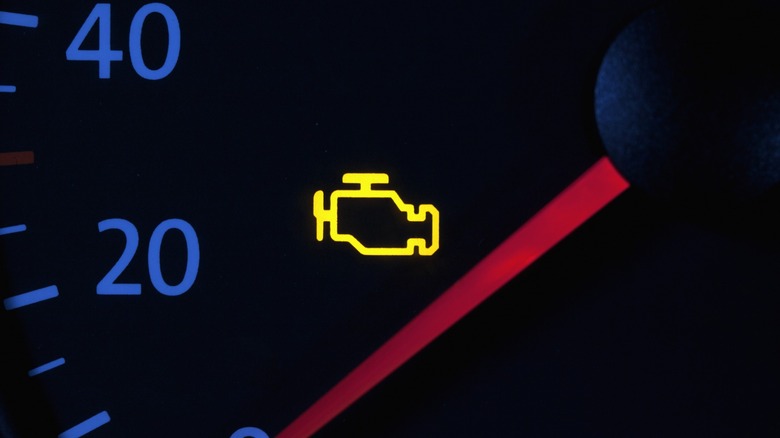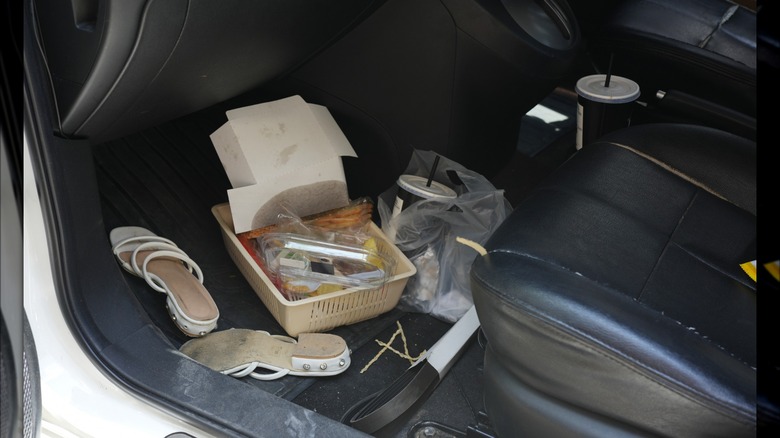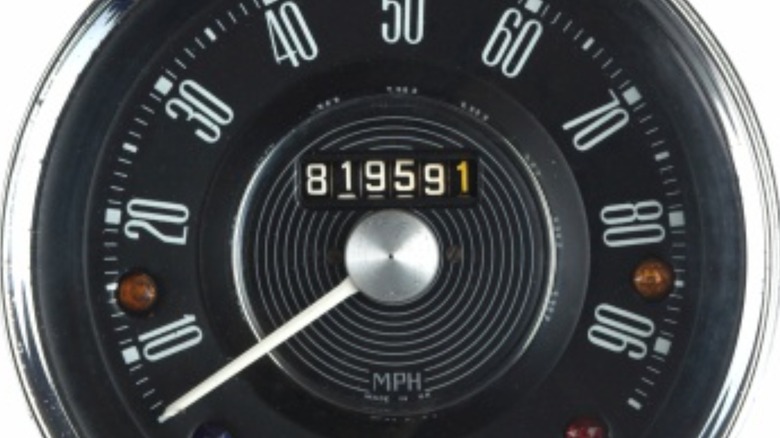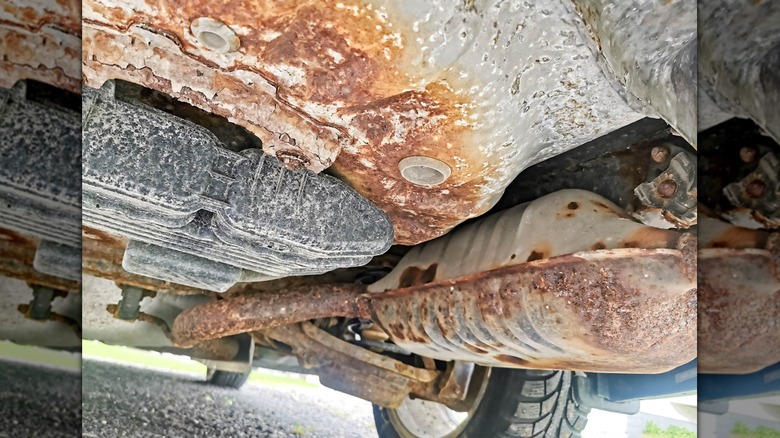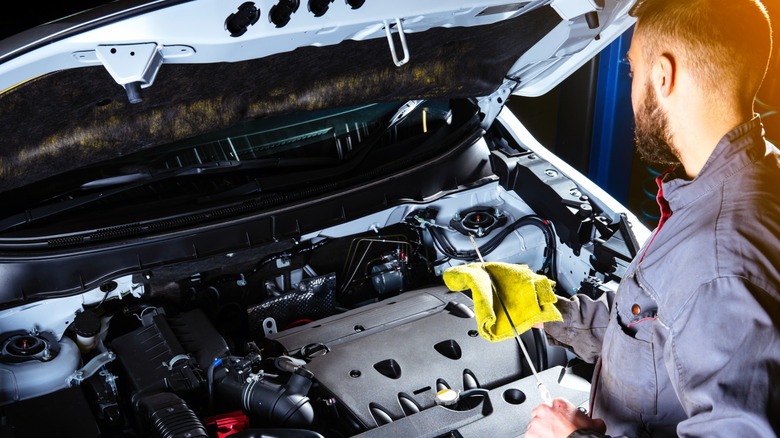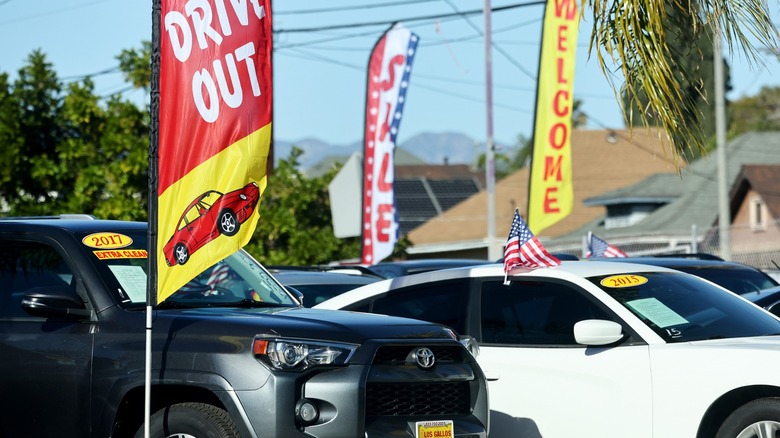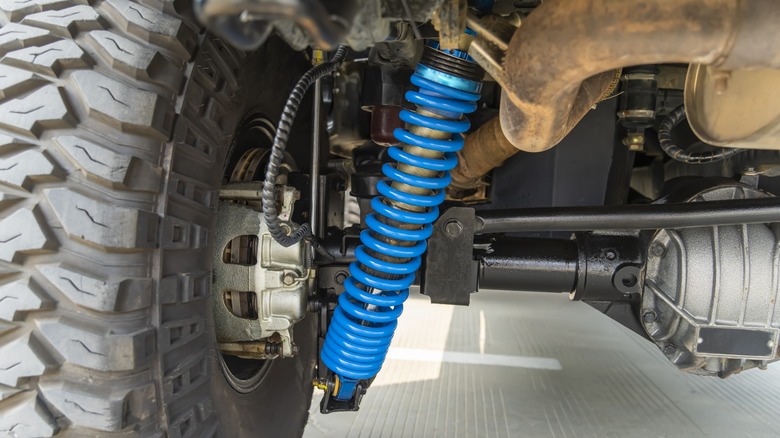10 Things You Need To Look Out For When Buying A Used Car
The experience of buying a used car is almost always fraught with frustration and dilemmas. This can be compounded depending on the reason for used car shopping in the first place. Browsing advertisements because you want something new or different presents a completely different scenario from searching for a car because of one that has broken beyond repair or has been wrecked and will not be repaired by insurance. Regardless, many factors go into a final purchase and a series of decisions must be made along the way to signing your name on the title.
Whether you plan to buy from a dealership or a private party, many aspects of any car need to be thoroughly inspected. As a graduate of a technical school automotive service program with well over a decade of experience in automotive repair in new and used car dealerships, independent repair shops, and as an independent contractor, I know a few things about what to look for in a used car. With proper preparedness, there is no reason the experience should be filled with apprehension. But first, it is paramount not to get emotional about anything and be prepared to walk away from the wrong deal, no matter how much you like the car. This, and the items to follow, have prevented me from buying a single lemon or money pit in my many purchases over the years. Look out for them and your next used car should serve you well.
Matching tires
The tires on a car can tell a detailed story of its past owners and the level of care they put into the car. The first thing I look for is a full set of tires all with the same manufacturer and model designation. They should also be the correct size for the car and with roughly the same wear on all four corners. Also, look for the brand and whether it is a premium brand such as Goodyear or PIrelli, or is it an odd name you have never heard of. Often these are extremely low-quality tires from China.
When you find a used car on the final stretch toward 100,000 miles or more and it is old enough to be booted from the certified pre-owned list, the tires from new will be long gone. If it has a full set of matching tires, the previous owner likely took care of the car and could afford to buy all four at once, particularly if the wear is even throughout. Furthermore, someone who springs for the Pirellis will also not hesitate to get little problems fixed right away, rather than let small problems fester and become your larger problem. If the wear is even, it tells you the tires have been rotated and the car has seen regular maintenance. Also, a new-condition spare may indicate an owner who relied on professional services for help and could afford to keep up on repairs. None of these tips guarantee anything, but they are good indicators.
Modifications
Car ownership, for many, is a deeply personal experience. Some of us have a strong connection to our cars and treat them as special projects in addition to being necessary transportation. Sometimes our special cars end up on the used market with modifications big and small. It is not uncommon to find one with tinted windows and aftermarket wheels, but it is the bigger modifications that require a closer look.
One of the issues with modifications is that they tend to be more popular among young drivers. Research also indicates that young drivers are more prone to aggressive driving, which also causes damage and wear to cars. Once you buy a car that's been modified and properly thrashed by a young driver, the premature wear of the engine and suspension will soon become your albatross. Some red flags to avoid include upgrades that leave a rat's nest of wires under the hood or are mounted by ill-fitting or makeshift hardware. Engine upgrades are generally something to avoid unless it is absolutely clear they were professionally installed on a well-kept car. Custom body panels and spoilers should have a factory-like fit with matching paint and no hardware showing. Excessive lowering or lift kits should all be avoided except for extremely well-done professional installations. Poorly installed suspension components can ruin tires and compromise handling and road safety.
Buying a modified car requires extra scrutiny. If the overall condition is flawless and installations look professional, it may be okay to buy. However, in my experience, this will be the exception and not the rule.
Check Engine light
It might seem obvious that no one should buy a car with the check engine light (CEL) illuminated. You might be surprised how often people are fine with ignoring it and purchasing a used car anyway. However, several variables are at play in these situations. Unfortunately, the most common sale of a car with a CEL on is that of a car priced at the lowest end of the spectrum being purchased by someone without the funds to get anything else.
Depending on where you live, a CEL can be a crucial factor in choosing a car. According to KBB, 29 states require regular emissions testing on vehicles. If you live in one of those states, a CEL will cause a test failure and you will have to have the issue repaired to keep driving. In the rest of the states, so long as the car is okay, you can keep driving, even if the CEL is on for a problem with emissions equipment, which is extremely common.
It is still best to avoid this. Emissions-related repairs can be costly, particularly catalytic converter replacements. When you get accustomed to driving a car with the CEL light on and a new potentially costly problem arises, you will have no idea unless you check the system regularly. The good advice is to avoid this scenario and have the car checked out thoroughly including checking the engine codes, even if no CEL is on. Bluetooth OBD2 code scanners can be purchased for less than $20 these days, and they are worth it.
Interior condition
Like tires, the interior of a car can tell a story. Even once a car has been detailed and looks and smells minty fresh, evidence of past neglect will remain. Some detailers are extremely talented and can make cars that look like they ought to be burned and put out of their misery look like new. It can also take a keen eye to spot signs of neglect just from the condition of the interior.
The interior of a used car can tell you a few things. If the fabric or leather shows substantial scuffs, wear, and other signs of neglect, it is possible the interior was treated poorly in its daily use, which means the rest of the car may not have been treated well either. Furthermore, even a well-detailed car can have leftover debris in the cracks and crevices. Suppose you discover bits of food, wrappers, crayons, etc. under the seats and deep down under the back seat cushions. In that case, it is also possible the car had been left filthy, which is another possible indicator of overall neglect. You might be surprised how gross some people's cars are at any time.
Nothing inside the car is definitive proof of anything. However, when looking at a used car, I have always thoroughly checked it inside and out, and it has worked well for me. If you strive to find the most perfect and well-kept car to begin with, you will more than likely end up with a good buy.
User reviews
Once you have checked the local listings from Marketplace and have taken a drive through a couple of used dealer lots and narrowed your search down to a few cars within your price range, you must turn to the internet for sage advice and warning signs. There are a few places to look for information on different models before committing to buying one.
For decades, Consumer Reports has independently tested and reviewed vehicles and published the results of their findings for the public. It is not supported by advertising, in order to remain unbiased, so a subscription is required. You can get a monthly subscription for $10 per month and cancel after buying the car. The information is worth it. User reviews of particular models can also indicate common problems and the costs of repairs. Edmunds provides a wealth of information on new and used cars and, like Consumer Reports, buys its test vehicles instead of using manufacturer loaners. Its official reviews may be helpful, but the consumer reviews toward the bottom of the page can tell you what to look for and what problems owners have already experienced. A few bad reviews should be taken with a grain of salt, while multiple reviews warning of the same problem should be taken more seriously. Truly reliable models may have no negative comments at all.
Other resources to check include forums, which often have in-depth discussions about cars, including technical issues, performance, comfort, and overall ownership experience. With enough research, you can avoid buying a money pit that will leave you stranded.
Very low mileage
This applies to a particular subset of used cars — vintage models. A late model car or an old restored classic is generally safe, but something that seems to be coming up for sale lately is cars from the '90s in excellent condition with extremely low miles. Watch out for these because they could bite you later.
Barring expensive exotics, it is not hard to find like-new cars from the '90s with under 30,000 miles. Considering a '90s car model could be 30 or more years old, one with 30,000 miles may have driven no more than 1,000 miles per year, or less than 100 per month. Some of these cars can be found for reasonable prices, but if you fancy buying a vintage ride and driving it every day, beware as it can be problematic.
This is because the rubber and silicone used for seals dry and crack over time. Dry rubber and silicone also become brittle, and when they suddenly have regular pressure applied, leaks appear. Leaks then cascade as multiple seals fail and your vintage car turns into a huge headache overnight. Rubber is also all over the suspension. Furthermore, condensation can accumulate where you can't see it, ruining the fluids and causing rust internally, and old fuel can gum up the fuel pump, leading to imminent failure. The bottom line is that these cars are risky buys, no matter how strong the nostalgia may be. However, if you cannot resist, find one with a few more miles and you will probably be okay.
Rust
Peculiar to areas north of the Mason-Dixon line is rust. If you live in the South or anywhere west of the Rockies, be thankful this mostly does not apply to you. Most of the northern United States uses salt, which will turn snow to slush and prevent it from freezing to the road surface. When snow and salt accumulate on the bottom of a car, it accelerates the formation of rust as the snow melts.
Rust absolutely destroys cars, especially those regularly parked outside that cannot often be cleaned. As rust forms on body panels, it will eat them at the edges until metal bits flake off over time. More concerningly, the same happens to the frame and suspension. Solid bits of steel an inch thick can become flaky and brittle until whole chunks fall off with the push of a finger. This is a major safety issue, as the structural integrity of the car is compromised. It also makes finding used cars without rust across the North harder than it is elsewhere.
I had never witnessed such degradation, living in the Midwest with only occasional snow, but when a dealer I worked for started buying cars from an auction in New York, the problem became clear. Some had frames turning to dust while others just had body panels you could stick your finger through. I provide this anecdote as a warning to people to get underneath the car and check it thoroughly, even outside of the Rust Belt.
Fluids
Check all the fluids. This concept seems elementary to many people, but you might be surprised how often buyers fail to do this. Many don't even look under the hood. For a mechanic like me or even someone who is into cars in general, that is inconceivable. Regardless, many people have little interest in cars and know even less about them. This is a suggestion for them.
Raise the hood and check every fluid possible. The engine oil should be full and relatively clear. Cars with a lot of miles won't have perfectly clean oil but you want to avoid it if it is pitch black. Check the transmission fluid, power steering fluid, brake fluid, and antifreeze. Cooling systems can get very nasty, and you want the coolant to be free of debris and not completely opaque. The other fluids should be checked to ensure that they are at least at proper levels and relatively clean as well.
Fluids can also tell a story of the car's condition to someone with training and experience. But for most people, these simple checks should be good enough.
History
Some facets of a car's history can be a red flag, while others that appear serious may not be. Depending on the price of the car, items in its record will carry different weight. On older cars with very high mileage for a bargain price, if it runs and drives, that may be good enough. But when you are investing thousands in a car, check to see what you are getting into.
Carfax is the oldest and most popular vehicle history check, although it is not the only one around. Service records with the car are the best if they are comprehensive. Sadly, papers and documentation that go with a car often find their way into the trash while a car heads through dealer auctions. Also, in some states, the title number may have an indicator that tells you how many owners a car has had. Fewer owners generally means more consistent maintenance.
Seeing lots of maintenance records on a Carfax is a good thing. Conversely, many entries for service work could indicate a car with problems. Some may see a collision record as a red flag, but it may not be. So long as the repairs are done well and the car drives straight, it will usually be fine. Furthermore, totaled cars that have been properly rebuilt can represent an excellent value for a used car. Just be thorough and use some common sense. If something doesn't look quite right, don't hesitate to walk away.
Suspension
Problems with the suspension and steering can be the hardest to spot. Many components cannot be properly checked without having a car on a lift and knowing what to look for. Plus, a car that drives perfectly straight may have worn parts that are living on borrowed time. Nonetheless, there are some simple checks anyone can do.
First and foremost, make sure the car drives straight down the road even if you take your hand off the wheel. Furthermore, the wheel should be centered. Check for play in the wheel. While stopped, if you can move the wheel left and right several degrees without turning the wheels at all, several parts are likely worn out. Listen carefully for noises while driving and any odd behavior while turning the wheel. Clicking sounds while turning can indicate a bad CV joint, while low squeaks going over bumps can result from worn ball joints. If you physically push on the bumpers and bounce the car on all four corners, it should return to normal and rest. Additional bounces indicate worn shocks.
Finally, have a look below. You may not know what you are looking at, but sometimes you find something so abnormal that anyone can see something has gone horribly wrong. Do not underestimate what foolish and untrained people will try to do to their cars. If you are unaware, check out Just Rolled In on YouTube. It is shocking.
